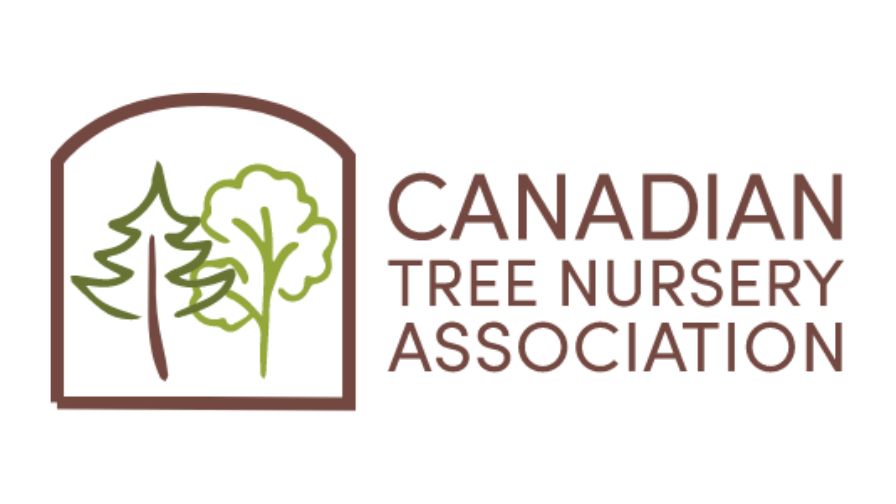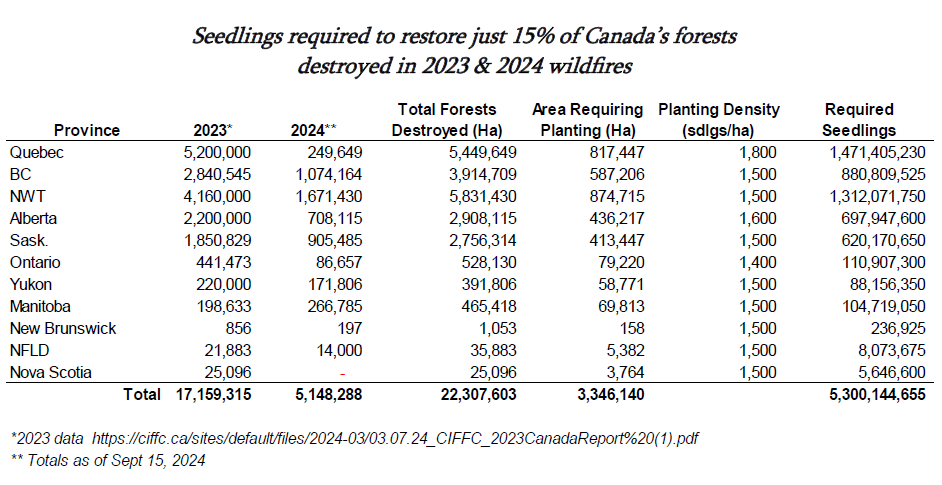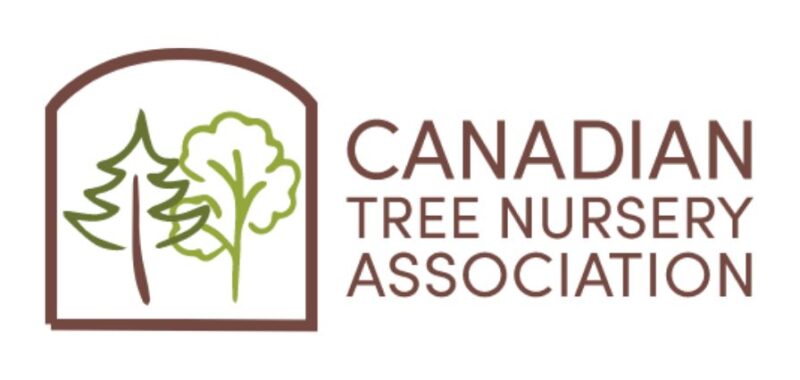
CTNA-ACPF logo | The Canadian Tree Nursery Association
During the Atlantic Forest Nursery Conference, the Canadian Tree Nursery Association-Association Canadienne des Pépinières Forestières (CTNA-ACPF) unveiled new data on Canada‘s forest restoration challenge following recent wildfires. Executive Director Rob Keen says, “We need over 5.3 billion seedlings to begin restoring only 15% of our forests destroyed by 2023 and 2024 wildfires. Action on this is urgently required by our Prime Minister, Premiers, and Forest Ministers.”
The data below shows the number of seedlings required by the jurisdiction to start mitigating the impacts of the 2023 and 2024 wildfires:
Tree Seedlings Need to Mitigate Canadian Wildfires

Seedlings required to mitigate 2023-2024 wildfires | The Canadian Tree Nursery Association
(Note: These numbers are conservative and assume 15% of burned areas will be replanted at a density of 1500 -1800 seedlings per ha as per standards in each jurisdiction. This planting is separate and distinct from the forest industry’s legal responsibility to replant post-harvest.)
Forest Restoration Planning
The planning and growth of seedlings for forest restoration typically require two to four years, which means our expert nurseries must make long-term investments in staff and infrastructure to guarantee the availability of the right trees. Quebec-based, Mike Downing, Chair of the CTNA-ACPF, says, “Our tree nurseries, which specialize in producing seedlings for forest restoration, serve as significant local employers in many rural Canadian communities, offering jobs for both permanent and seasonal workers. Strategic planning positively impacts the health of our forests, our communities, our climate, and the economy.”
The 2023 wildfire season set new records and 2024 is expected to be the second-worst season in recent decades. The urgent need for forest restoration post-wildfire is worsened by provincial budget cuts. British Columbia plans to plant 58 million fewer trees in 2025 than in 2024, a surprisingly regressive move.
Keen notes, “The Federal government’s commendable 2 Billion Tree (2BT) planting initiative, announced in 2020 was made before the recent significant wildfires.” He adds, “It is now obvious the 2BT planting target and execution mechanisms are insufficient to address the catastrophic losses of 2023 and 2024. However, the lessons learned during the 2BT program development set the stage for increasing overall restoration efforts beyond the program’s 2031 end date. The government must ramp up its efforts to restore its Crown forests and prepare for future challenges. Governments must invest in the public’s natural resource assets to ensure their long-term health and all the benefits they provide.”
The CTNA-ACPF members are capacity-ready and committed to meeting the current and increased demand for tree seedlings crucial for wildfire forest restoration. However, current policies, slow execution processes, and the lack of long-term forest seedling demand commitment from the government to support Crown forest restoration, impede members’ planning and forward resource/capital allocation in line with government commitment. By building partnerships, the Canadian Tree Nursery and its members can ensure a reliable supply of quality seedlings, fostering healthy forests for future generations.
CTNA-ACPF Recommendations
- Increasing and ensuring long-term Federal and Provincial commitment to the restoration of Crown forests: The existing forest restoration supply chain is ideally positioned to respond to increased planting demands. However, this will require addressing the barriers of planning and implementation, and governments making long-term predictable demand commitments. This will enable public and private growers to self-invest effectively to meet the challenge.
- The Prime Minister committing to expanding the 2 Billion Tree Program beyond 2031.
- Engaging Western science and traditional knowledge to ensure the “right trees are planted in the right place.”
- Addressing labor shortages in the nursery sector and equipping workers with the training and skills for sustainable tree seedling cultivation.
- Start now!
The CTNA-ACPF urges all stakeholders—including government, private sector partners, and the public—to prioritize a material increase in tree planting as essential to address wildfire devastation, support the sustainable rural economy, and champion more aggressive environmental stewardship in response to climate change.
For more information, please visit https://ctna-acpf.ca/news for more information. To schedule an interview in French or English, please contact Don Huff at [email protected].

